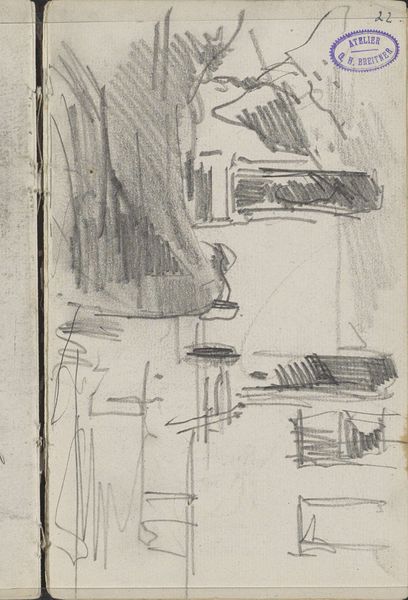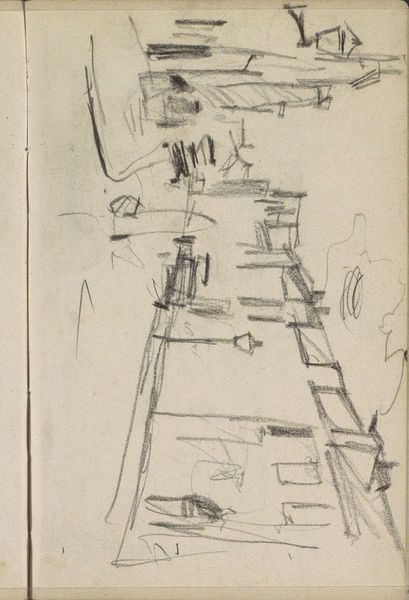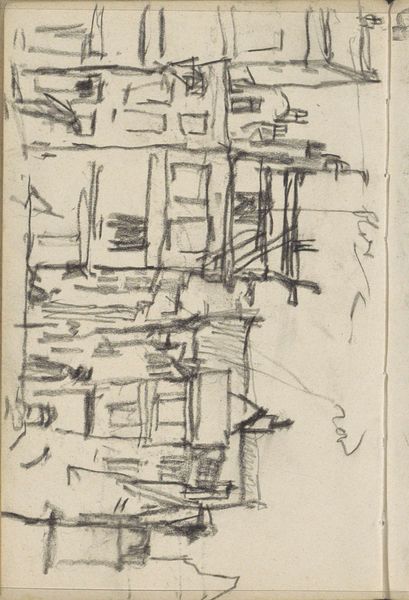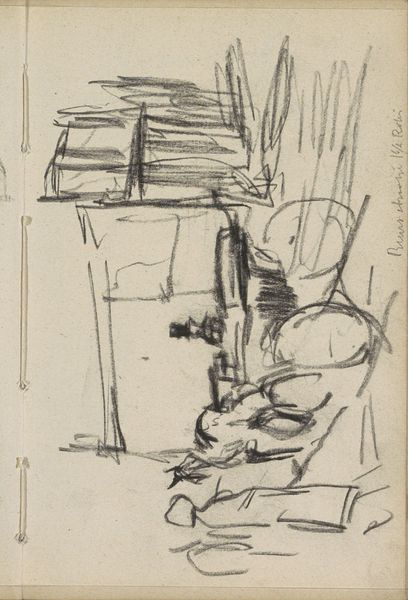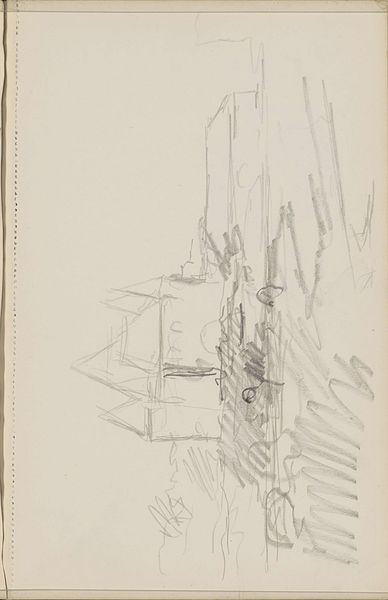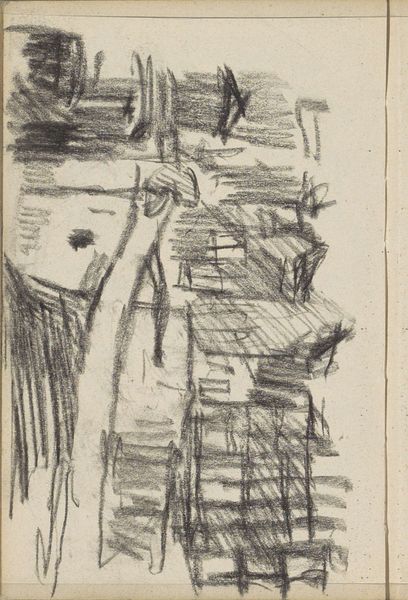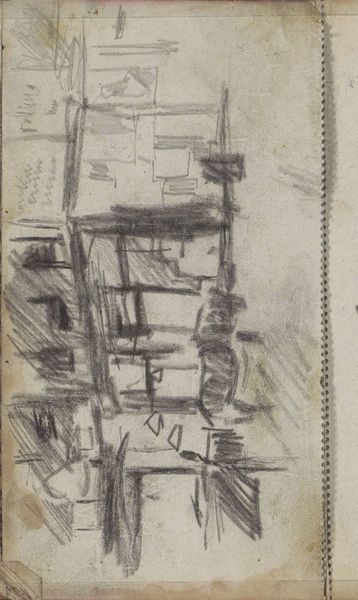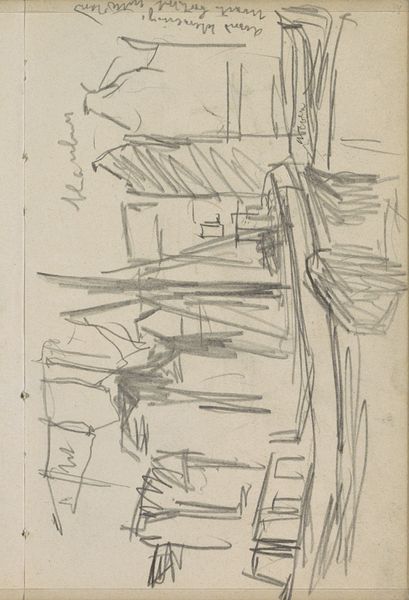
drawing, paper, graphite
#
drawing
#
pen sketch
#
landscape
#
paper
#
graphite
#
realism
Copyright: Rijks Museum: Open Domain
Editor: This sketch by Isaac Israels, "Two Girls Playing in the Street", is a drawing from around 1875 to 1934, made with graphite on paper. It feels so raw and immediate. I'm curious, what do you see in this piece? Curator: Well, immediately, I notice how Israels captures a fleeting moment. Consider the figures themselves—they’re almost abstracted, aren’t they? The girls become symbols of childhood, playfulness distilled into their barest essence, which brings forth both nostalgia and questions on representation of childhood memories. What did "playing" look like during the period this sketch was made? What stories were these girls told about the city's future, or their own? Editor: That's interesting. The sketch feels so incomplete, but the very essence of play remains. I wouldn’t have thought about how those few graphite strokes might be so deeply ingrained with broader stories. Curator: Exactly! These weren't posed figures in a studio, they represent Israels' observation of the culture around him. The pen and graphite lines, roughly suggesting brickwork or shadowed doorways, create a world beyond the figures, which allows us to consider social contexts and the cultural symbolism of where children "play". Think, even, how the light and shadow contributes to mood – does it conjure warmth or a kind of urban constraint? Editor: It’s funny, I initially saw it as just a simple sketch. Now it feels much richer, loaded with symbols and cultural narratives that I missed. I definitely see much more than play now. Thanks for pointing out so much, the quick marks say more than one would assume at first glance. Curator: It is art's trick, isn't it, to give us an endless pathway from simple shapes to much larger ideas. It encourages to find links between our time and previous cultural knowledge.
Comments
No comments
Be the first to comment and join the conversation on the ultimate creative platform.
